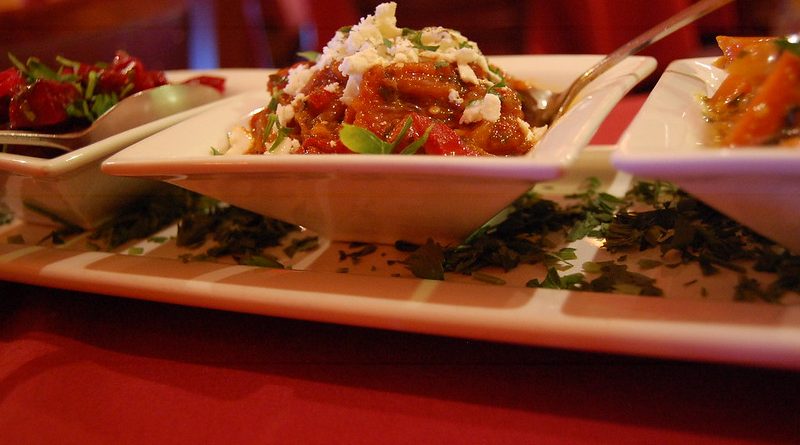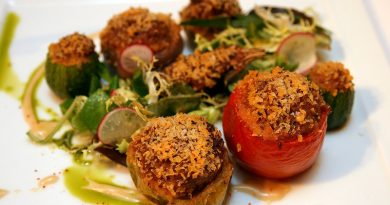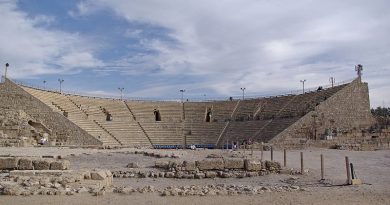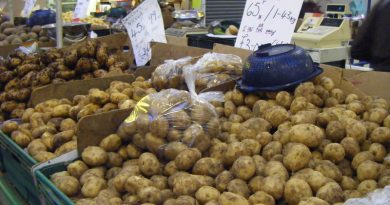The Food of Israel
Israel is a tiny country, similar in size to Wales or New Jersey. It borders with Lebanon in the North, Egypt in the South and Syria and Jordan to the West. At just over 60 years old, Israel has a surprisingly diverse and rich food tradition which has been shaped by Jewish refugees arriving from all over the world. Traditionally people think of falafel as Israel’s national dish since the Jewish state was established in 1948 but there is much more to Israeli food than this.
Israeli food is influenced by the Jews from the Diaspora. Immigrants coming from Germany, Poland, Russia and its surrounding countries (known as Ashkenazi) and Jews from Spain and the Middle East (known as Sephardi) all brought a melting pot of their own Jewish cultural traditions mixed with cuisine from the country they were fleeing from to create the rich texture of what is Israeli cuisine today.
Although the origin is somewhat disputed, the old Maghrebi/Mediterranean dish of ‘Shakshuka’ – a traditional snack which was brought to Israel by Jewish Maghrebi refugees who had nothing else to eat but a few tomatoes and eggs – is now the sort of thing that Israeli’s cook when they have nothing much in the fridge, and is extremely popular as a ‘cafe’ dish. Perhaps incidentally, shakshuka does not contravene Jewish dietary laws.
Probably the most famous Jewish dish in the world, also known as ‘Jewish penicillin’, is Chicken Soup. This is a traditional Ashkenazi dish eaten at the beginning of the Friday night Shabbat meal which has been passed down from generation to generation. It is eaten along with the Matzah Balls and Challah (the traditional platted Jewish bread), also eaten during Shabbat.
Jewish dietary laws (Kashrut) have impacted on the foods eaten in Israel, a particularly at traditional festive times such as Rosh Hashanah (Jewish New Year), Yom Kippur (The Day of Atonement), Hannukah (Festival of Lights), and Pesach (Passover).
Rosh Hashanah
The foods of Rosh Hashanah or Jewish New Year are often sweet and symbolise a sweet start to the year. These often include Apples with Honey, Seasonal or New Fruit such as pomegranate, Challah Bread with Honey, Honey Cake, a whole roast fish (with the head, sybolising the head of the year), dates, and cous cous (the multitude of beads representing the multitude of blessings).
Yom Kippur
the most solemn religious fast of the Jewish year, just days following Rosh Hashanah. On this day, forgiveness is sought from god by engaging in a fast, and engaging only in prayer and synagogue services for 25 hours. It’s customary to break the fast with a comforting, easy-on-the-stomach meal such as bagels, or kugel, a traditional ashkenazi baked casserole made with egg noodles or potatoes.
Hanukkah
Hanukkah, otherwise known as the Festival of Lights also has its traditional foods, including Latkes which are fried potato pancakes, brisket, kugel, Sufganiyah (jelly filled donuts) and Chanukah Gelt which are chocolate coins usually given to children.
Passover
Passover Seder is the ritual feast that marks the beginning of the 7 or 8 day Jewish holiday of Pesach, or Passover. Traditional dishes of the feat include matzah ball soup, gefilte fish which is a poached fish and matzah ball often served as an appetizer, beef brisket, chicken and potatoes.
Not featured during the meal are leavened foods made of grain. Leavened simply means caused to rise during the cooking process, and so you won’t find bread, along with most other foods made with flour grains, with the exception of Matzah which is unleavened flatbread, and Matzah meal which is the bread ground up.




